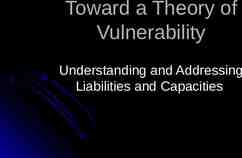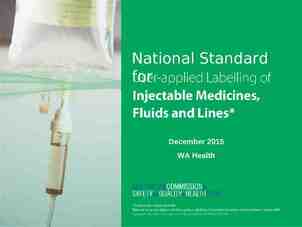Handwriting Analysis, Forgery & Counterfeiting Chapter 10
26 Slides331.28 KB
Handwriting Analysis, Forgery & Counterfeiting Chapter 10
Objectives Describe 12 types of handwriting exemplars that can be analyzed in a document. Demonstrate an example of each of the 12 exemplars of handwriting traits. Identify the major goals of a forensic handwriting analysis. Describe some of the technology ised in handwriting analysis. Distinguish between the terms forgery and fraudulence. Identify several ways in which businesses prevent check forgery. Describe 4 features of paper currency that are used to detect counterfeit bills.
Introduction Document analysis Very broad Examination and comparison of questioned documents with known material Questioned documents – any signature, handwriting, typewriting, or other written mark whose source or authenticity is in dispute of uncertain. Document expert specially trained person who scientifically analyzes handwriting and other features in a document.
Introduction to Handwriting Factors that cause variation in a person’s handwriting Different types of writing instruments Pen Pencil Marker Crayon Mood Age How hurried the person is BUT each person has a unique handwriting style- developed over time as they become adults.
12 Characteristics of Handwriting 1. Line Quality Do the letters flow or are they erratic and shaky? 2. Spacing Are the letters equally spaced or crowded? 3. Size consistency Is the ratio of height to width consistent? 4. Continuous Is the writing continuous or does the writer lift the pen?
12 Characteristics of Handwriting 5. Connecting Letters Are capitals and lowercase letters connected and continuous? 6. Letters Complete Are letters completely formed? Or, is a part of the letter missing? 7. Cursive and printed letters Are there printed letters, cursive letters, or both?
12 Characters of Handwriting 8. Pen Pressure Is pressure equal when applied to upward and downward strokes? 9. Slant Left, right, or variable? 10. Line Habits Is the text on the line, above the line, or below the line?
12 Characteristics of Handwriting 11. Fancy curls or loops Are there fancy curls? 12. Placement of crosses on t’s and dots on i’s Correct or misplaced? Are t’s crossed, crossed in the middle, toward top, or toward the bottom? Are the i’s dotted, dotted toward the right, left, or centered?
Handwriting Examination Forgeries Documents made, adapted, or falsified with the intention of deceiving someone
Handwriting Examination Analyzing a handwriting sample 3 basic steps 1. Questioned document & the standards (exemplars) are examined & detectable characteristics are recorded. If possible, get a handwriting sample from the suspect without informing them of the comparison that will happen. Best exemplars are letters, diaries, greeting cards, or personal notes. 2. Characteristics of the questioned document are compared with the known standard 3. Experts determine which characteristics are valuable for drawing a conclusion about the authenticity & authorship of the questioned document.
Handwriting Examination Similarities do not guarantee common authorship – may not be the same person Unique characteristics of one person’s handwriting can occur in another’s. Experts have to take into account a lot of factors in their analysis.
Handwriting Examination Experts also have ways of determining if someone tries to disguise their handwriting or copy someone else’s (conscious writing effort). Suspect should NOT be shown the questioned document Suspect should NOT be given specific instructions about punctuation and spelling The pen and paper should be similar to the questioned document
Handwriting Examination Technology Used in Handwriting Analysis Biometric Signature Pads Computerized Analysis Forensic Information System of Handwriting (FISH) Computerized handwriting database maintained by the Secret Service
Handwriting Examination Handwriting Evidence in Court Expert prepares a written report to present to jury Expert called upon as an expert witness
Handwriting Examination Shortcomings in Handwriting Analysis Some forgeries can be missed Quality of the standards obtained can be poor The effects of mood, age, drugs, fatigue, & illness on a person’s handwriting
Handwriting Examination Forgery Process used by criminals to make, alter, or falsify a person’s signature or another aspect of a document with the INTENT to deceive another. Fraudulence When material gain, such as money, accompanies a forgery
Handwriting Examination Check Forgery Americans write approximately 70 Billion checks a year! About 27 Million in illegitimate checks are cashed EACH DAY!!!!!!! Checks are altered by Ordering someone else’s checks from a deposit slip Directly altering a check Intercepting someone’s check, altering it, and cashing it Creating forged checks from scratch.
Handwriting Examination Preventing Check Forgery How do companies protect themselves? Print checks on chemically sensitive paper Use a large font size that requires more ink and makes alterations more difficult Use high resolution borders on the checks that are difficult to copy Print checks in multiple color patterns Embed fibers in checks that glow under different types of light Use chemical-wash detection systems that change color when a check is altered
Literary Forgery Forgery of a piece of writing, such as an historic letter or manuscript Best literary forgers try to duplicate the original document by using materials that are similar to those in the original document Documents can be treated to
Counterfeiting When false documents or other items are copied for the purpose of deception Most common counterfeited items Travelers’ checks Certain bonds Currency Other counterfeited items Coins Food stamps Postage stamps Paper money Federal felony- punishable by up to 15 years in prison Investigated by the Secret Service
Counterfeiting Counterfeit Currency In the past, with access to a scanner and a color printer, it was pretty easy to do Secret Service has added features that prevent this today Real money is printed on special paper Relatively easy to detect counterfeit money Iodine pens – stay yellowish on real , black on fake There is a movement to move to polymer money- a type of plastic money because it’s very difficult to counterfeit.
Features Found in Real Currency 1. Portrait stands out form the background & appears raised off the paper. 2. There is minute microprinting on the security threads, as well as around the portrait. 3. Serial number is evenly spaced and the same color as the Treasury seal. 4. Check letter and Quadrant
Features Found in Real Currency 5. Federal Reserve seal has no sharp points Treasury seal has clear, sharp sawtooth points 7. Clear red and blue fibers are woven throughout the bill. Security thread is evident, consisting of a thin, embedded vertical line or strip with the denomination of the bill written
Features Found in Real Currency 8. Federal Reserve Number and Letter 9. Series 10. Check Letter and Face Plate Number 11. Watermark appears on the right side of the portrait of the bill in the light 12. When a new series bill is tilted, the number in the lower
Features Found in Real Currency 13. Clear, distinct background details and lines 14. Clear, distinct border edge































